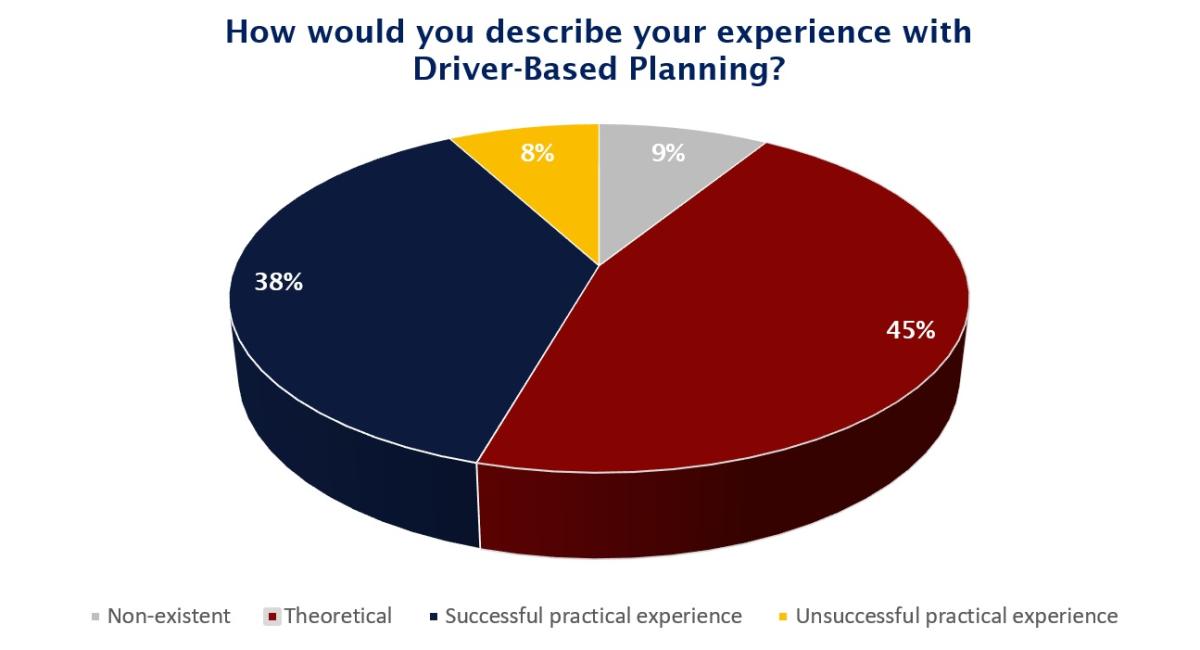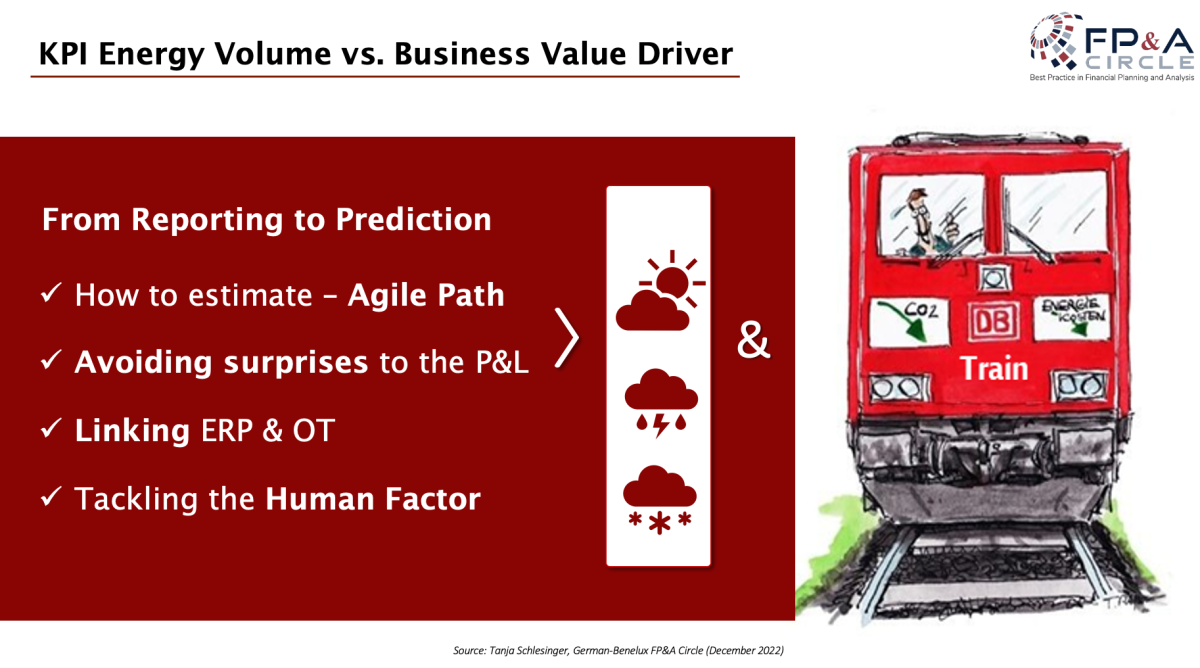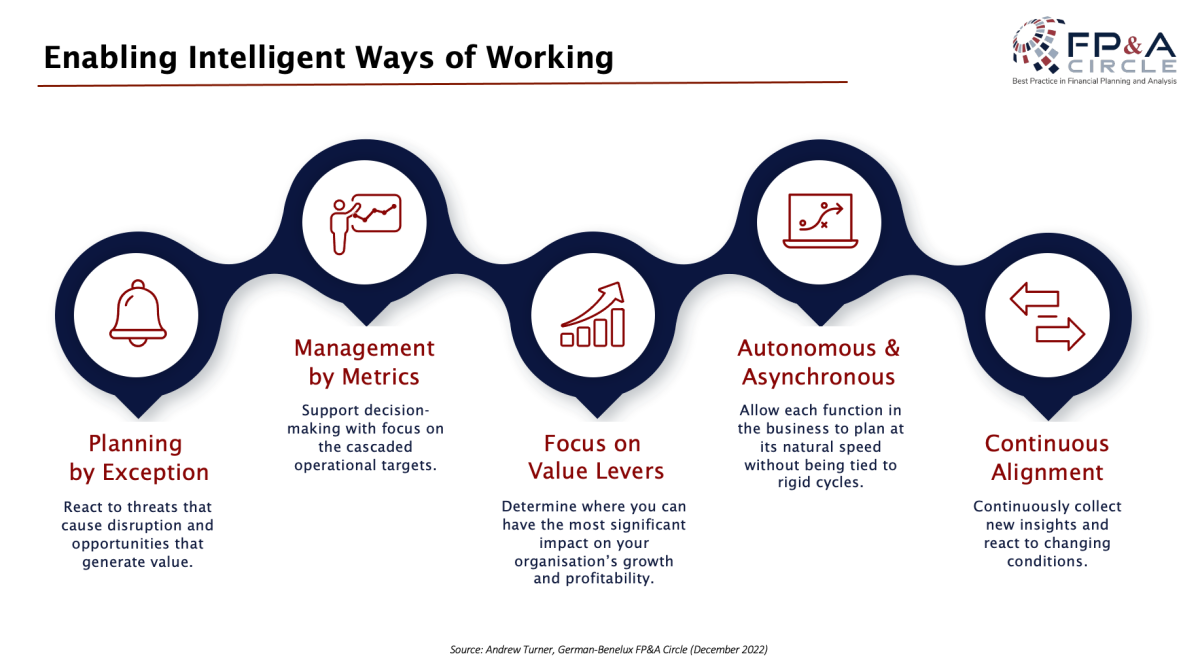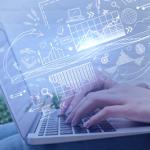Understanding new KPIs and drivers, their impact and how we can influence them has been a...
It may be challenging to move away from the traditional budgeting process. Still, in today's turbulent times, more and more companies are turning to Driver-Based Planning, often in combination with Scenario Planning, for greater agility and adaptability.
Driver-Based Planning and forecasting allow us to react to changes in the external environment, create more accurate and meaningful plans, and promote understanding of the business and its drivers.
The Digital German-Benelux FP&A Circle has attempted to answer critical questions related to Driver-Based Planning benefits and implementation.
This article provides an overview of the topics and cases presented and discussed by the expert panellists in the "The Power of Driver-Based Planning and Forecasting for Modern FP&A" webinar, as well as the results of our polling questions.
How Experienced Are We with Driver-Based Planning?
Most of the webinar audience (46%) have purely theoretical experience with Driver-Based Planning and came to gain more knowledge and learn from the experts. In comparison, another large portion of the audience (38%) have already successfully implemented Driver-Based Planning in their organisations.
9% and 8% of the participants have no experience with DBP or have failed implementation attempts, respectively.

Figure 1: The Overall Experience with Driver-Based Planning
Dilemmas in Driver-Based Planning in Shell
Remko Boer, VP of Finance - Shell Upstream Controller/ Planning & Appraisal and Reporting at Shell, has shared his experience with Driver-Based Planning in the oil industry.
Remko has emphasised how the external environment is becoming more unpredictable and volatile: the only certainty is "uncertainty." Driver-Based Planning provides senior management with up-to-date insight throughout the year. We need to understand key risks and uncertainties, value and track record, and fit-for-purpose data granularity to achieve this.
At Shell specifically, Driver-Based Planning is based on carefully identifying drivers for each business segment and delivers more value when combined with a Scenario Management approach.
Remko has mentioned the importance of digital enablers and a learning mindset for successful Driver-Based Planning implementation.
Digital enablers:
- Integrated planning tools,
- Predictive Analytics,
- Digital collaboration tools.
Learner mindset:
- Leadership behaviour (“tone from the top”),
- Integrated strategic –and operational plans,
- Integrated financial and non-financial information (e.g., Carbon),
- Think in ranges.
Business Drivers in FMCG Industry - Storck Case Study
Massimo Garau, Director of Finance and Administration at Storck Deutschland KG, shared his practical experience with Driver-Based Planning in Storck.
Key steps of the process include:
- Identify key performance drivers,
- Estimate their development,
- Formulate expectations/objectives (P&L, Demand Planning),
- Estimate what investment is necessary.
Massimo suggests focusing on relevant drivers for effective planning and forecasting, meaning those we can affect and control. Even though some macroeconomic drivers, such as inflation, GDP growth and other factors, are relevant, they shouldn't be included in the model. However, they can be part of the Scenario Planning exercise.
For each relevant driver, we should estimate how it will affect Top-/Bottom-line and use transparent assumptions to monitor progress on actions and objectives.
Confectionary business is a stable business, and core revenue drivers remain the same for many years and include:
- Listing,
- Presence in leaflets,
- Second placement in stores,
- Advertising.
Discovery Journey For the True Business Value Drivers
Tanja Schlesinger, VP of Business Intelligence OneSource at Deutsche Bahn Regio AG, has shared an exciting practical case of tackling a human factor as a business driver in the transportation industry.
To keep moving forward, organisations need to sustain their competitive advantage. There are several factors to tackle here:
- Technology Innovation – using the advantage of modern FP&A tools,
- Geopolitical Crisis – follow and react to consequences such as inflation, energy prices, logistical crisis,
- Rethinking Key Value Drivers – gain deeper business understanding than just KPIs-based performance canvas and price-volume analysis.
On discovering the fundamental value drivers for energy consumption, DB started with the classic price-volume split. But soon, they plunged deeper into the volume part, approaching the air conditioner usage and the weather conditions. That is where Machine Learning techniques came into the picture. However, the weather-based predictive model could not explain all the deviations.
It was then that the human factor in the behaviour of train drivers was identified. The tendency to drive faster to make up for delays resulted in almost zero actual time savings but led to much higher energy consumption. Sharing these insights with operational staff helped change behaviour patterns and save energy.

Figure 2: Understanding Your Business Drivers Will Help Avoid Surprises to the P&L
Tanja concluded her presentation by pointing out critical trends in FP&A function that allow us to stay ahead of the competition:
- Leverage Disruptive Technology,
- Avoid Silos of Truths,
- Me to We - establishing xP&A,
- Empathy and joined Forces,
- Agile Approach.
The inability to set proper ways of working represents the most significant risk in Driver-Based Planning deployment.
That's what 47% of our audience said when asked about their views on implementation risks. The inability to create a working model, a poor FP&A skill set and a planning solution are risks by 21%, 17%, and 16%, respectively.
.jpg)
Figure 3: The Biggest Risks of Driver-Based Planning Deployment
Enabling Intelligent Ways of Working
Andrew Turner, responsible for Finance Solutions at Board International, has shared a practical overview of the Driver-Based Planning process with us.
The process begins with the platform we choose, the models we build on that platform and the deployment strategy. However, it is essential to realise that our processes should evolve and change with the development of our FP&A function.
In contrast to the traditional waterfall planning process, when objectives are being cascaded from top to bottom, the intelligent ways of working include the following steps:
- Planning by Exception - React to threats that cause disruption and opportunities that generate value,
- Management by Metrics - Support decision-making with a focus on the cascaded operational targets,
- Focus on Value Levers - Determine where you can have the most significant impact on your organisation's growth and profitability,
- Autonomous & Asynchronous - Allow each function in the business to plan at its natural speed without being tied to rigid cycles,
- Continuous Alignment - Continuously collect new insights and react to changing conditions.
Such a setup allows organisations to achieve flexibility and efficiency and make sure that decisions at all levels are aligned with the company's strategy.

Figure 4: Intelligent Ways of Working
Conclusions
Driver-Based Planning and Forecasting are becoming more pervasive in the FP&A community, enabling us to present leadership with an always-up-to-date business perspective, react to changes in key business drivers, and bring finance closer to business.
However, your Driver-Based Planning implementation could be at risk if any of the key components are missing:
- Curious learning mindset, which allows us to identify drivers and understand their relationship to our core KPIs;
- Appropriate planning systems and tools, which do not replace but facilitate effective business collaboration in planning;
- Leadership buy-in and support are conditions for successful change management and a stable outcome.
We would like to thank our global sponsor Board International for their great support with this FP&A Circle.
Subscribe to
FP&A Trends Digest

We will regularly update you on the latest trends and developments in FP&A. Take the opportunity to have articles written by finance thought leaders delivered directly to your inbox; watch compelling webinars; connect with like-minded professionals; and become a part of our global community.





Connagh@yahoo.com
January 29, 2023
mchsueh87
February 1, 2023